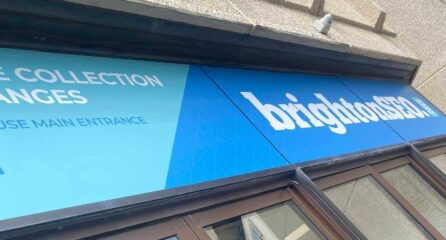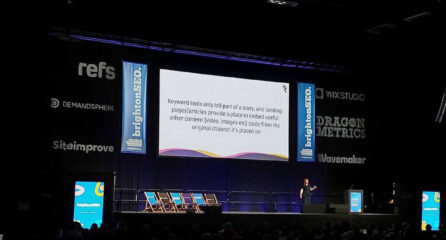SEO during a pandemic
It takes consumers around 60 days (approximately 2 months) to pick up and retain a habit. This means that in the case of the recent pandemic and any public health or economic crisis, trends and behaviours are going to change and reliable norms can no longer be taken for granted.
E-commerce and online services have become normal for all, regardless of pre-pandemic nervousness around online shopping. As a result, the online market is bigger. People still need things and if there’s a way your business product or service can still be useful now, then you must explore it.
We’ve seen search trends and consumer behaviour change across the board, affecting all marketing channels, leading to reappraisal of strategies and focus areas.
In this article, we explain why using SEO to adapt and re-pivot marketing strategies has been so effective and will continue to be as we adapt further to changes the pandemic throws at us.
SEO efforts during Covid-19
Search has a huge market share with 53% of all traffic to websites coming from organic search. If we look at search traffic only, 73% comes from organic and 17% comes from paid. That gives a lot of weighting to SEO efforts and makes it a powerful tool during a moment of crisis.
So what has the SEO picture been like during Covid-19?
We saw many brands pausing paid campaigns during the pandemic, with SEO providing a popular, reliable and free source of traffic. Many industries were negatively affected by the situation such as Travel, but key areas such as Finance, Food and Healthcare saw a boom during this time.
Why is SEO such a strong channel?
SEO is key for all industries, now and in the future. Because it’s always on, the rewards can be seen now and in the future with the effects being long-lasting and evergreen.
The benefits of SEO during a crisis
What’s more, for struggling industries, it’s cost effective, easy to pivot and re-prioritise. It’s well-suited to a pandemic because with reduced budgets, it really does give you more for less. With content priorities shifting, you can address these changes with effective re-optimised SEO content.
Longevity in SEO
The added benefit of a strong SEO strategy during Covid-19 are the rewards that it reaps months down the line. Good SEO has reliable longevity. And, during the peak of Covid-19 and onwards as the situation changes, the downtime provides the perfect opportunity to work on SEO.
The slow-burn approach with SEO means that companies have a cost effective engine to keep leads, traffic and conversions coming in now and going forward.
SEO is vital at a foundation level in all digital marketing projects. Now more than ever, we will see brands recognising the importance of it at initial stages of planning, rather than a last minute bolt on. SEO is vital to site migration planning, new product section launches and new site builds.
What SEO recommendations have we made to clients during the pandemic?
At Loom, we’ve ensured that clients have been addressing Covid-19 directly with content, SEO tactics and specific messaging where possible, especially at the start of the crisis.
We understood it was important to word messaging carefully and not appear to capitalise on the situation, especially online businesses who were in a better position to thrive. While recommending Covid-angled content, we also suggested more general evergreen content to provide a strong foundation for months to come regardless of the situation.
Changing strategy based on covid-19 search trends
During the pandemic, Google has identified 3 different types of emerging search trends. These include:
- ‘Shock’: a sudden change in behaviour, unlikely to sustain e.g. school closing searches
- ‘Step change’: a sudden change in behaviour, showing signs of stabilisation and useful for forward planning e.g. home stretching workout searches
- ‘Speed up’: an acceleration of existing behaviour and may sustain – monitor
With this in mind, it’s important to assess which behaviours you’re seeing around your brand, industry and your target audience trends.
A useful exercise is to group your customer behaviour into intent clusters, such as below:
This idea forms the basis of much SEO planning and content work anyway, so it’s useful as a tool to expand during the days of the pandemic.
Many of these intent clusters will change depending on how the situation evolves and this may affect how consumers view your offering.
Using data to understand user behaviour
During the peak of the pandemic and as it eases, it’s important website owners and webmasters gather performance data and compare with pre-pandemic data to understand the change in behaviour and to future proof against similar situations.
- Google Trends
- Shopping insights
- Google Alerts
- Find my audience (for Youtube)
- Search insight data
- Social listening
- Internal business insights
- Customer insights
- Google Scripts
We would recommend using these tools to assess the search picture:
Bear in mind how your industry in particular has been performing during the crisis. For example, travel has obviously been hit badly, so you might want to consider building your brand with evergreen content and building up remarketing lists whilst you wait for search trends to bounce back.
On the other hand, E-commerce queries around ‘near me’ and ‘open now’ searches have seen a boost, so it’s key to maximise on any local services you may be able to offer or develop.
Learn from other digital channels
Be ready to change, adapt and learn from other channels. If PPC or social traffic has changed, there might be learnings you can apply to your SEO strategy. For example, you can create content based on high volume PPC keywords, or content based on what is performing well on social.
Understanding how your brand visibility has changed
You should also look at how your brand visibility has been affected since the pandemic started. You can pool information from Google Analytics and Search Console and use it to understand a broad picture of how your brand visibility has changed.
For example, ask yourself these questions:
- How have traffic and queries changed?
- How have trends for your core terms fluctuated?
- Are there any new trends around your industry, business offering, and customer pain points that you can use to pivot your SEO?
If you haven’t already, you should build up your brand and your relationship with your core target audiences through SEO, by providing expert advice and information around Covid-19 and link out to reliable brands if you need to
Adapting your local SEO
Local SEO and local search has become vital for some during Covid-19.
If you have a local offering, it’s important to build your local SEO – especially if you’ve started to offer a local service.
You can do this by:
- Updating your Google My Business account
- Add updated opening times
- Post articles on your GMB so people who search for your business know how you’re operating
- Add new photos to reflect your new offering
- Make sure your address information is correct
Key SEO takeaways to implement now
Below are the key takeaways you need to implement NOW if you haven’t already:
- Launch or update FAQs section on your site where you can.
- Use local SEO (Google My Business and local directories) and update regularly.
- Use social media and trends to listen, understand and support people’s needs or concerns.
- Consider changing information around your services, products, incentives, payment and core messaging.
As the Covid-19 situation changes, brands still need to show how they’re handling their business offering during the pandemic.
It should be clear what measures you have in place and there will be a general nervousness around going back to ‘normal lifestyle’. Search and SEO provides invaluable support around information gathering.
How have brands used SEO to adapt during the pandemic?
To keep on top of your industry and maintain performance during the pandemic it’s vital to understand where your business fits into the wider economic situation. Ask yourself:
- Has the pandemic actually opened up new business opportunities (a new local market for example) ?
- Or has it made you realise that you need to diversify based on industry impact or search opportunities?
- If you’ve already adjusted your offering, is it fully supported by all your digital channels and are you starting to build the foundations of your new offering with SEO?
From our experience, the brands that have done particularly well during the Covid-19 crisis have made small tweaks to their offering and continued to use SEO to implement to grow their search presence.
Others who have seen search trends deflate have readjusted strategies accordingly.
For example, the focus has been on pausing paid activity, while building on SEO work and re-pivoting content to suit the situation. All the while, the brand still builds key relationships with its customers and reinforces their brand reputation while they wait for trends to see a boost.
Others have ridden out the crisis by implementing urgent business changes, creating new business offerings to meet an adjusted demand. When launching, they have focused on leading with SEO and a strong search presence to help the new business area into the market.
The key thing is to monitor the search picture now, and regularly to see what has changed so you can be agile and as successful as possible.
The importance of SEO during rebuild, recovery and beyond
When you’re starting to form your new marketing strategies going forward, it’s important to bear in mind that secondary lockdowns are possible and the situation may not be ‘normal’ for some time.
Now is the moment to use all the knowledge you’ve gained to inform your plans for the next few months.
Google has created a useful three-pronged approach to the pandemic and how to plan your marketing during this time.
‘Respond,Rebuild, Recover’
- Use the rebuild phase to look at deeper insights, prepare to capture dynamic demand.
- Use the recovery phase to reframe your business model and implement learnings to drive sustained growth.
Remember to use search patterns and trends to understand and draw new insights all the time.
In these key phases of recovery, you should be strategic about the channels you use to bounce back. For example:
- Recovery phase: key channels should be: website, paid, SEO, email.
- Develop on-point offers, prioritise schema, focus on voice search and technical health and implement targeted relaunch of paid media. Schema markup is a form of microdata and when added to pages gives more descriptive information to search engines to allow them to give sites richer search results.
- Rebuild phase: Key channels should be: Paid media, website, SEO.
- Harvest content marketing (and SEO) efforts, scale paid media, leverage prospecting and lookalike modelling.
SEO during this recovery phase is key to your brand success. It can:
- Protect your brand and online reputation
- Support repivoting of marketing strategies
- Build the groundwork for the ‘new normal’ and provide foundations for other channels.
What we recommend for the future and how to use SEO to safeguard this
Use Schema as part of your SEO strategy
Using schema (learn about schema here) is also a great way to boost your SEO during this time and to be agile within the search engines. Useful schema to implement on your site during your recovery phase include:
HowToStep – Perhaps you’ve developed a new service or updated a process. This explains what those steps are (within an article)
HowToTip – Explains what the user or reader could potentially do
AnnouncementLocation – Highlights an announcement to a change in service
WebFeed – You can include additional information through a URL for when that specific page is updated
Stay on top of your search terms
It’s important during this time to stay on top of your core search terms in Google Trends and start thinking now about Q4 initiatives as well as seasonal campaigns. They may have to be different this year.
Remind your customers of changes to your service
It’s also important to remind customers of any service changes you’ve had to make along with any returns to business as usual. You can do this through on site messaging and email marketing.
Make sure paid media and SEO in harmony together
With paid campaigns now being restarted and ramped up, it’s also important to consider how both paid and SEO can complement and work together. For example, organic keyword data can feed into PPC campaigns and PPC campaigns can help get content in front of more people, by adding articles as ad extensions.
Prepare a strategy for when the economy starts to reopen
Above all, ensure you have a strong marketing strategy to rebound as the economy opens up again. SEO is key to this. You should have already done the groundwork and will have rankings in place ready to rake in the traffic as terms see a boost.
Don’t worry if you’re only just starting to think about SEO
However, if you’re only just considering how SEO could help you during this time, don’t panic. You can still use SEO to have a positive impact on your website performance. In fact, strategic, well-informed changes can reverse poor performance and start to see an impact in as little as a month.
But – be aware that people may be using the internet in different ways at the moment; for research and information gathering rather than converting, an assumption borne out by evidence of low website conversions but high search volumes for key terms.
The benefits of SEO in the long run
One key area that SEO impacts is the user experience (UX) of your site. This is because as you apply SEO best practices and optimise your site for user intent, you make it easy to engage with and navigate around. UX is an important best practice for good SEO. Google wants users to find your site as engaging and useful as possible and this means the user experience of your site, e.g how easy it is to use, is crucial to ranking well too.
With Google’s Page Experience algorithm update coming next year, there couldn’t be a better time to improve the UX of your website.
Improving your content for SEO also increases your chances of higher conversion rates by making it more relevant and easy to digest for users. If you don’t see direct sales, you may have sown the seed for a purchase later down the line or gathered another user on your email marketing list. Fresh content is key too, and can be used to give service updates based on Covid-19.
The beauty of SEO is that it can work harmoniously with all marketing channels, with well optimised landing pages supporting PPC and social media marketing.
Remember to work on your local SEO too, even if you don’t have a local service or you can’t offer it now. It’s excellent for brand awareness and reputation and will allow you to direct people to your brand and content to build trust during the pandemic and beyond.
Looking to the future with SEO
Even if you have seen minimal impact to your business or even growth during the pandemic, there is really no such thing as business as usual now or in the future.
All industries will have been affected somehow and you should consider the following for your business and industry:
- What are the customer behaviour shifts?
- How long will they last and are they permanent?
- How is society going to be different?
- What are the gaps that allow innovation in the short term and the long term?
- What strategies will we keep in our business?
Going forward we hope to see the power of SEO continue. Even as a sense of normalcy returns, we are keen that SEO is seen as a channel to be relied on as a core part of a marketing strategy.
Bespoke SEO services at Loom Digital
At Loom, we offer bespoke SEO strategies that will help your business stay strong during the pandemic and into the recovery period. Our SEO team would love to hear about your business and its challenges, and come up with a strategy that will help you face the difficult times head-on.
Get in touch with our team today. Email us at [email protected] or call us on 0117 923 2021.





